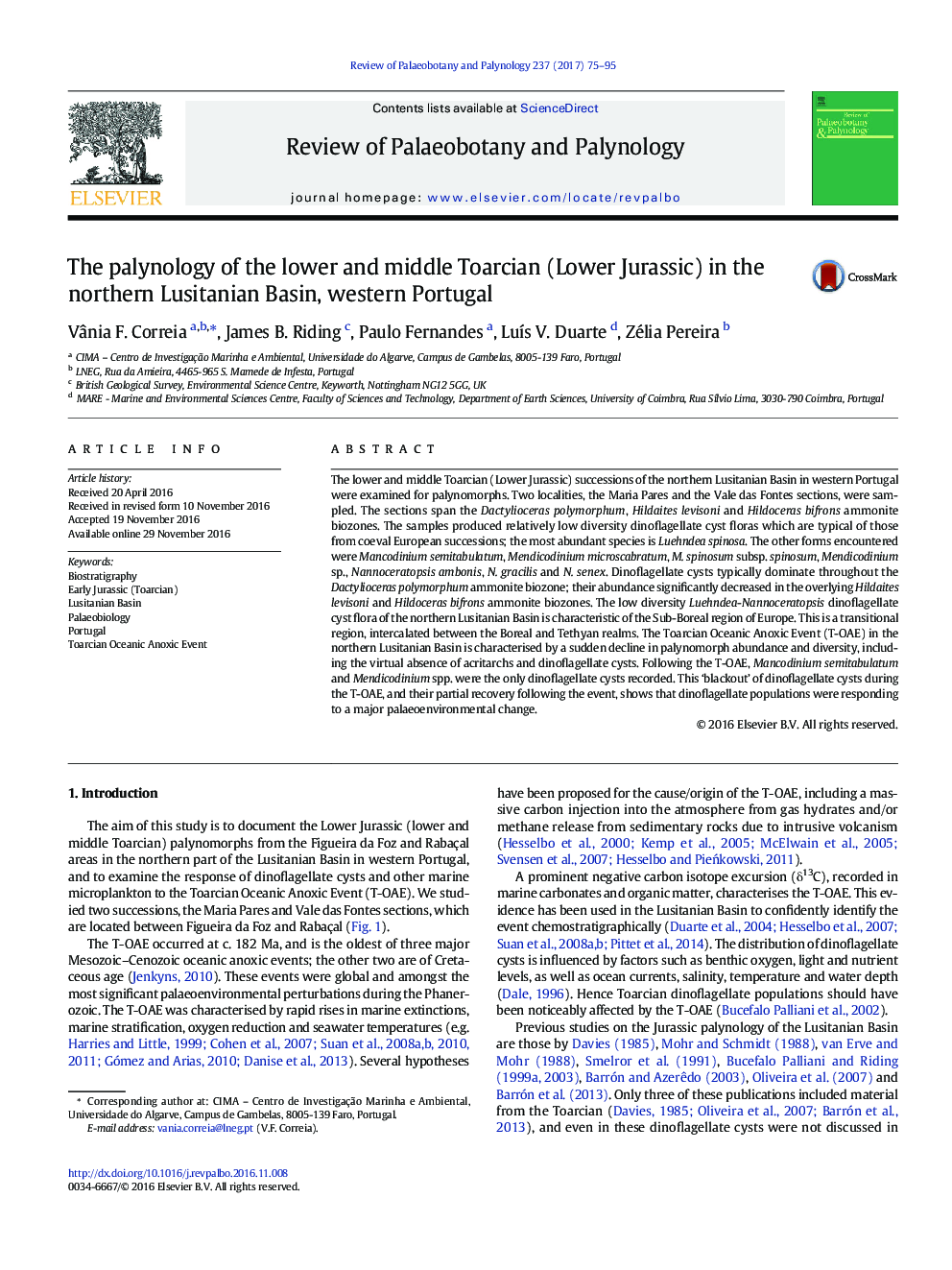| کد مقاله | کد نشریه | سال انتشار | مقاله انگلیسی | نسخه تمام متن |
|---|---|---|---|---|
| 5788423 | 1642460 | 2017 | 21 صفحه PDF | دانلود رایگان |
عنوان انگلیسی مقاله ISI
The palynology of the lower and middle Toarcian (Lower Jurassic) in the northern Lusitanian Basin, western Portugal
ترجمه فارسی عنوان
پالینولوژی دهلیز پایین تر و میانی (ژوراسیک پایین) در حوضه ی شمالی لوسیتانی، پرتغال غربی
دانلود مقاله + سفارش ترجمه
دانلود مقاله ISI انگلیسی
رایگان برای ایرانیان
کلمات کلیدی
موضوعات مرتبط
مهندسی و علوم پایه
علوم زمین و سیارات
فسیل شناسی
چکیده انگلیسی
The lower and middle Toarcian (Lower Jurassic) successions of the northern Lusitanian Basin in western Portugal were examined for palynomorphs. Two localities, the Maria Pares and the Vale das Fontes sections, were sampled. The sections span the Dactylioceras polymorphum, Hildaites levisoni and Hildoceras bifrons ammonite biozones. The samples produced relatively low diversity dinoflagellate cyst floras which are typical of those from coeval European successions; the most abundant species is Luehndea spinosa. The other forms encountered were Mancodinium semitabulatum, Mendicodinium microscabratum, M. spinosum subsp. spinosum, Mendicodinium sp., Nannoceratopsis ambonis, N. gracilis and N. senex. Dinoflagellate cysts typically dominate throughout the Dactylioceras polymorphum ammonite biozone; their abundance significantly decreased in the overlying Hildaites levisoni and Hildoceras bifrons ammonite biozones. The low diversity Luehndea-Nannoceratopsis dinoflagellate cyst flora of the northern Lusitanian Basin is characteristic of the Sub-Boreal region of Europe. This is a transitional region, intercalated between the Boreal and Tethyan realms. The Toarcian Oceanic Anoxic Event (T-OAE) in the northern Lusitanian Basin is characterised by a sudden decline in palynomorph abundance and diversity, including the virtual absence of acritarchs and dinoflagellate cysts. Following the T-OAE, Mancodinium semitabulatum and Mendicodinium spp. were the only dinoflagellate cysts recorded. This 'blackout' of dinoflagellate cysts during the T-OAE, and their partial recovery following the event, shows that dinoflagellate populations were responding to a major palaeoenvironmental change.
ناشر
Database: Elsevier - ScienceDirect (ساینس دایرکت)
Journal: Review of Palaeobotany and Palynology - Volume 237, February 2017, Pages 75-95
Journal: Review of Palaeobotany and Palynology - Volume 237, February 2017, Pages 75-95
نویسندگان
Vânia F. Correia, James B. Riding, Paulo Fernandes, LuÃs V. Duarte, Zélia Pereira,
